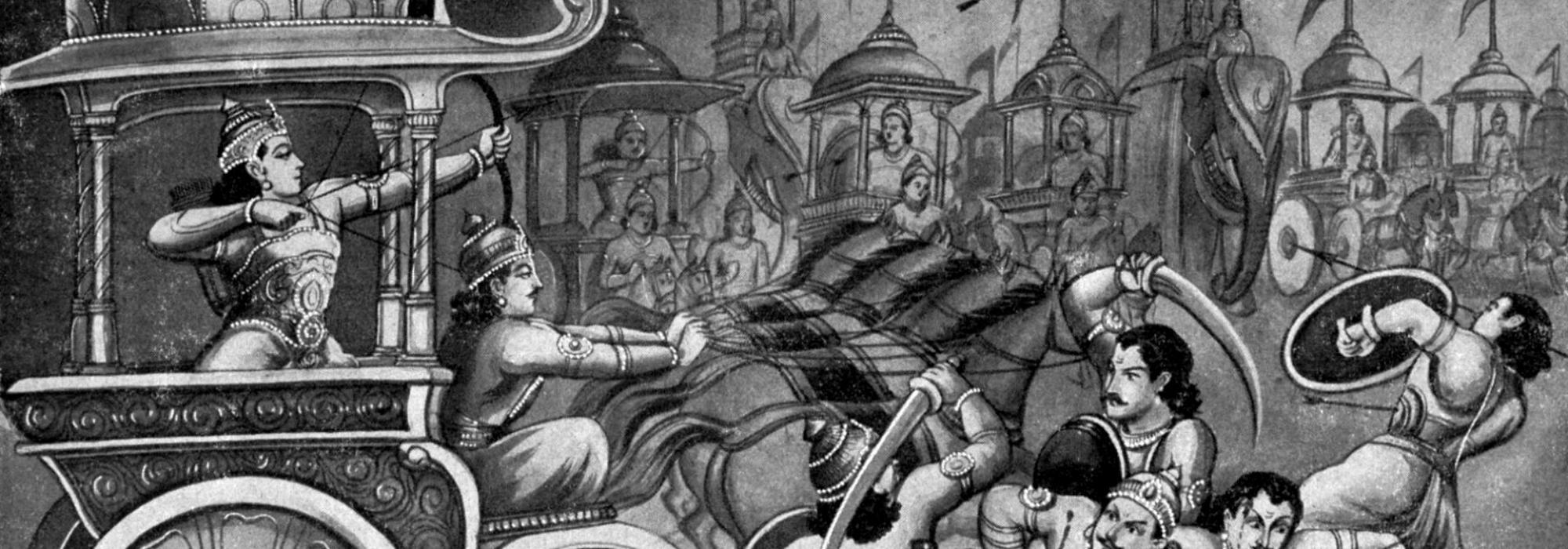Kosambi goes on to question the veracity of the Mahabharata’s claim on the numbers:
“If a Mahabharata war had actually been fought on the scale reported, nearly five million fighting men
killed each other in an 18-day battle between Delhi and Thanesar…”
(M&R, p. 17)
From the description in the Mahabharata, we know that the Kaurava and Pandava armies had 11 and 7 akshauhinis respectively; a total of 18. From the Amarakosha we know that one akshauhini has 21,870 chariots, 21,870 elephants, 65,610 horses and 109,350 foot soldiers. This adds up to about four million deaths. As we know, only a handful of warriors survived the war. There are three points to consider in this regard:
- Number is false. The number was boosted to show the impact, or the number was wrongly estimated.
- Number is true. After all, this was the foremost war of the ancient world. Also this was the end of the dvāpara yuga and there were many people living at that time. The population problem is solved if we consider time as cyclic rather than linear. We should not extrapolate 6.2 billion backwards to 3139 BCE and say that there were only few million people in the world.
- Problem of space. Assuming four million are dead, there comes a question of space. However this is not as unrealistic as one would imagine. According to the United Nations World Urbanization Prospects report (2009 revision), the fourth largest urban agglomerations in the world is Mumbai with a population of about 20 million in an area of about 1100 sq. km (which is smaller than the modern-day district of Kurukshetra). Another instance is the National Geographic report on how seven billion people standing shoulder-to-shoulder would be accommodated in the city of Los Angeles, which has an area of about 1200 sq. km.
["Casualties in the Kurukshetra War" (unpublished) by Koti Sreekrishna]
It is possible that a war of such magnitude was not fought, but that hardly proves that a war was never fought. Looking at the methods of collecting information in those days, one can imagine how people might have over-estimated the size of an army.
Excavations carried out in and around Kurukshetra yielded weapons from that age (see this page, for instance). This might give some evidence for the war. However, whether or not the great battle between the cousins took place is immaterial for the study of the Gita. Kosambi merely displays his immaturity in bringing up such a trivial issue in the discussion.















































